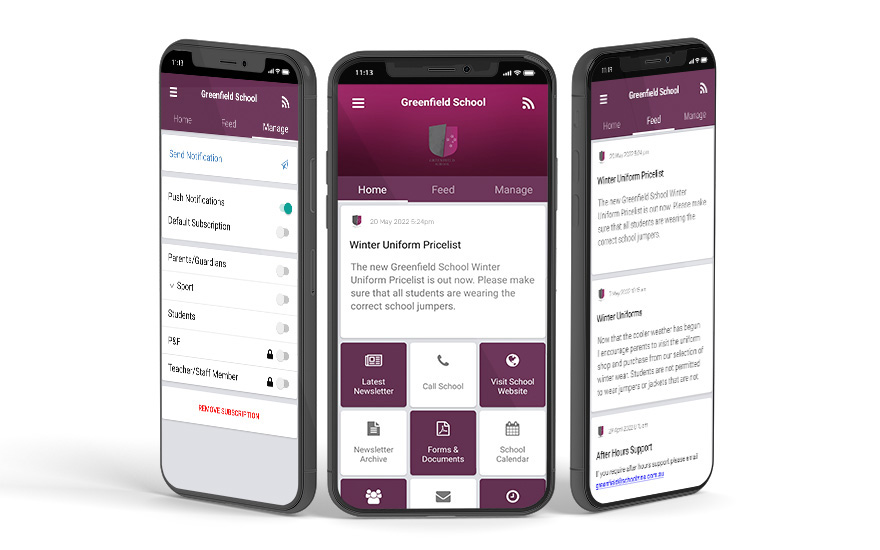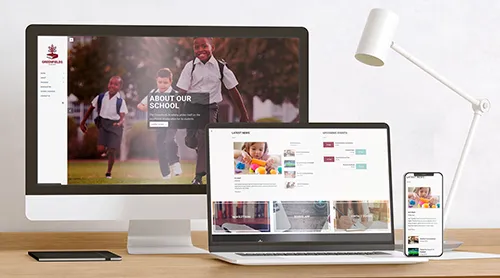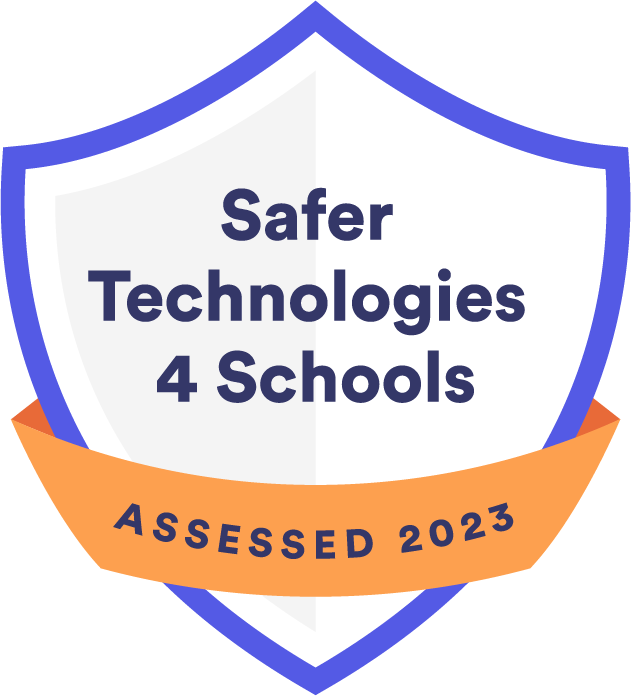In today’s digital age, a school’s online presence is as vital as its physical one. Just as you’ve likely encountered frustrating websites when booking a restaurant, ordering products, or planning a trip, your school’s website is also subject to quick judgments. Within seconds of landing on your website, your audience decides if it is “good” or “bad.” A poor user experience causes your audience to click off of your website as fast as they can and will likely never return.
What Makes a Good School Website?
A good school website is more than just a digital brochure. It’s a window into your school and when done correctly can be a powerful tool that showcases your values and unites the current school community while welcoming potential new members. If you’re unsure how to initiate this process, we’ve outlined seven essential features necessary for any school website to actively engage new visitors and keep their current audience informed.
1. School Calendar
A school calendar is the backbone of your school’s website. It keeps everyone informed and it’s important to regularly update this calendar and ensure parents and the community have accurate information on upcoming key dates. For users of Schoolzine, the integrated platform streamlines this process by linking your Schoolzine calendar directly to your website. With this integration, updating one calendar updates it on all platforms, saving you time and minimising effort. This ensures that parents, teachers, and students can access this information quickly and without any confusion.
2. Welcome from the School Principal
The welcome message from the school principal serves as a virtual greeting to your website’s visitors. It’s a chance to convey your school’s ethos, vision, and commitment to education. Make it warm and inviting, just as you would if you were welcoming someone in person. This message can set the tone for a positive online experience and help build a connection between your school and its online audience.
3. FAQ’s Page
The Frequently Asked Questions (FAQ) page is your digital information hub. It should provide clear and concise answers to common queries about your school, including admission procedures, policies, and any other frequently encountered questions. Keeping this page up-to-date can help reduce the need for phone calls and emails seeking answers. It’s an efficient way to provide quick information and boost trust with your audience.
4. School Newsletter
A school newsletter is a powerful tool for keeping your school community informed and engaged. It’s an excellent platform to showcase achievements, announce upcoming events, and share important news. It can work with your website to help create an engaged community, highlight key events and provide essential updates and information. Having a newsletter section on your website where parents can easily access and download the current newsletter is a great way to increase traffic to your site and improve newsletter readership. Include articles, photos, and updates that provide insights into your school’s vibrant life. Newsletters play a crucial role in building a sense of community and engagement among parents, teachers, and students.
5. Contact Form
The contact form is a great tool for communication. It offers a convenient way for parents, students, and other visitors to reach out to the school. With this feature, you can collect enquiries, feedback, and suggestions without revealing personal email addresses. It simplifies the process of managing incoming messages, ensuring that no important queries go unanswered.
6. Secure & Responsive Site
Considering that 60% of internet users access content through mobile devices, it’s important to ensure your website is mobile-friendly. Failing to meet this criterion could result in visitors swiftly exiting your site without truly engaging with your content and learning about the school. Beyond mobile optimisation, guaranteeing your website’s security with an SSL Certification is essential. This not only protects user data from being stolen and misused but also establishes trust, reassuring visitors that their information is safe and encrypted.
You can quickly check if your website offers these features by visiting the site on your mobile phone and checking the design, format and how easy it is to navigate and by also ensuring your website has a lock in the URL bar. If you have a lock your site is secure, if you don’t, it needs some urgent attention!
7. Up-to-Date Content and Communications Strategy
The final feature for a successful school website is maintaining up-to-date content and implementing a strong communications strategy. With a well-integrated communication strategy in place, you won’t find yourself spending endless hours regularly updating the website. By ensuring that your website contains vital information like contact details and basic FAQs, your website, Student Management System and school newsletters will all work together to serve as the primary communication hub. This combination of accurate website content, engaging newsletters, and an informative Student Management System significantly enhances the effectiveness of your school communications and better yet, saves you valuable time!
A good school website is an essential tool for communication, information dissemination, and community building. These seven key features form the foundation of a successful school website. They help you communicate effectively, reduce administrative burden, and create a positive and welcoming online environment for your school community. By focusing on these elements, you can provide an outstanding online experience for all stakeholders associated with your school.
If you’re looking for a professional, easy to update school website we can help! Our team has built hundreds of secure school websites that are optimised for accessibility and integrate key technical features. Learn more here, https://www.schoolzine.com/school-websites/







